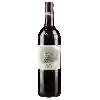
Château Haut-GazeauDomaine de la Gadette Bordeaux
This wine generally goes well with poultry, beef or veal.
Food and wine pairings with Domaine de la Gadette Bordeaux
Pairings that work perfectly with Domaine de la Gadette Bordeaux
Original food and wine pairings with Domaine de la Gadette Bordeaux
The Domaine de la Gadette Bordeaux of Château Haut-Gazeau matches generally quite well with dishes of beef, veal or game (deer, venison) such as recipes of tournedos with foie gras, tripe in the style of caen or duck fillets with honey.
Details and technical informations about Château Haut-Gazeau's Domaine de la Gadette Bordeaux.
Discover the grape variety: Fuëlla nera
Fuella nera noir is a grape variety that originated in France (Provence). It produces a variety of grape especially used for the elaboration of wine. It is rare to find this grape to eat on our tables. The Fuella nera noir can be found cultivated in these vineyards: South-West, Cognac, Bordeaux, Provence & Corsica, Rhone Valley.
Informations about the Château Haut-Gazeau
The Château Haut-Gazeau is one of of the world's greatest estates. It offers 4 wines for sale in the of Bordeaux to come and discover on site or to buy online.
The wine region of Bordeaux
Bordeaux, in southwestern France, is one of the most famous, prestigious and prolific wine regions in the world. The majority of Bordeaux wines (nearly 90% of the production Volume) are the Dry, medium and Full-bodied red Bordeaux blends for which it is famous. The finest (and most expensive) are the wines of the great châteaux of Haut-Médoc and the right bank appellations of Saint-Émilion and Pomerol. The former focuses (at the highest level) on Cabernet Sauvignon, the latter on Merlot.
The word of the wine: Aromatic
Character of a wine that is particularly expressive and rich in aromas. Some grape varieties, such as Gewurztraminer or Muscat, produce very aromatic wines.












